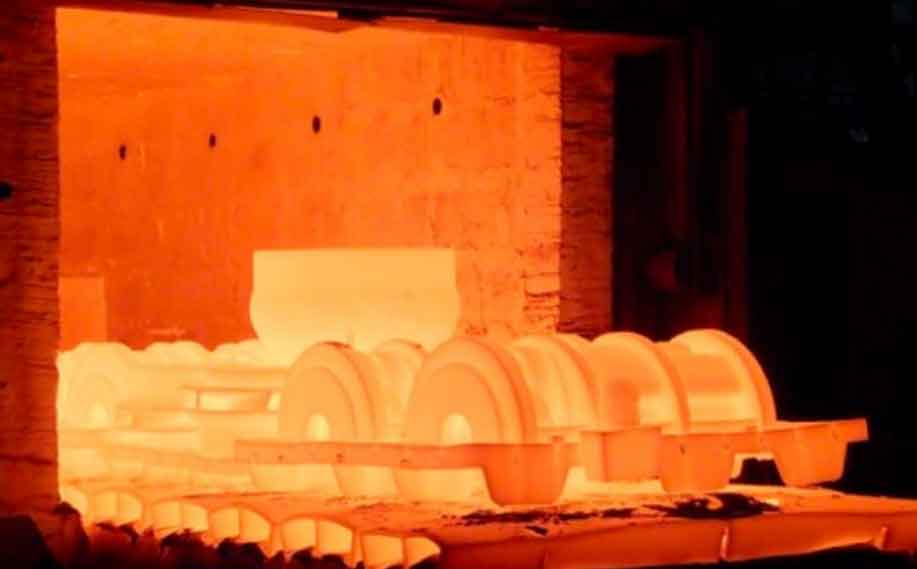Heat treatment of lost foam castings involves a delicate balance between hardness and toughness to achieve optimal performance. The specific heat treatment process will depend on the material used for the casting, but here are some general considerations to achieve the desired balance:

- Austenitizing: Austenitizing involves heating the casting to a temperature above the critical transformation point of the material to transform the microstructure into austenite. This step is essential for achieving the desired hardness in the final casting. The temperature and soaking time during austenitizing should be carefully controlled based on the material’s phase diagram and heat treatment specifications.
- Quenching: Quenching is a rapid cooling process that follows austenitizing. It involves immersing the casting in a quenching medium such as oil, water, or polymer. Quenching helps to transform the austenite into a desired phase, such as martensite, which provides increased hardness. The quenching rate is critical for controlling the final hardness of the casting. Faster quenching rates result in higher hardness but lower toughness, while slower rates can lead to reduced hardness but improved toughness.
- Tempering: Tempering is a heat treatment process that follows quenching and involves reheating the casting to a specific temperature and then cooling it in a controlled manner. The tempering process aims to reduce the brittleness caused by the quenching process and improve the toughness of the casting. The temperature and duration of tempering should be carefully selected to achieve the desired balance between hardness and toughness. Higher tempering temperatures generally lead to increased toughness but reduced hardness.
- Multiple Quenching and Tempering (Q&T): In some cases, a multiple quenching and tempering (Q&T) process may be employed to achieve a better balance between hardness and toughness. This involves repeating the quenching and tempering steps multiple times at different temperatures to optimize the microstructure and mechanical properties of the casting. Each cycle of quenching and tempering modifies the microstructure, leading to improved toughness while maintaining a desirable level of hardness.
- Testing and Optimization: The heat treatment process for lost foam castings should be optimized through testing and evaluation of the mechanical properties. Hardness testing, impact testing, and microstructural analysis can provide valuable insights into the performance of the castings. Based on the test results, adjustments can be made to the heat treatment parameters to achieve the desired balance between hardness and toughness.
It’s important to note that the specific heat treatment process for lost foam castings will vary depending on the material, casting design, and performance requirements. Consulting with metallurgical experts and following the material supplier’s recommendations and guidelines is crucial to ensure the optimal balance between hardness and toughness for the specific casting application.
